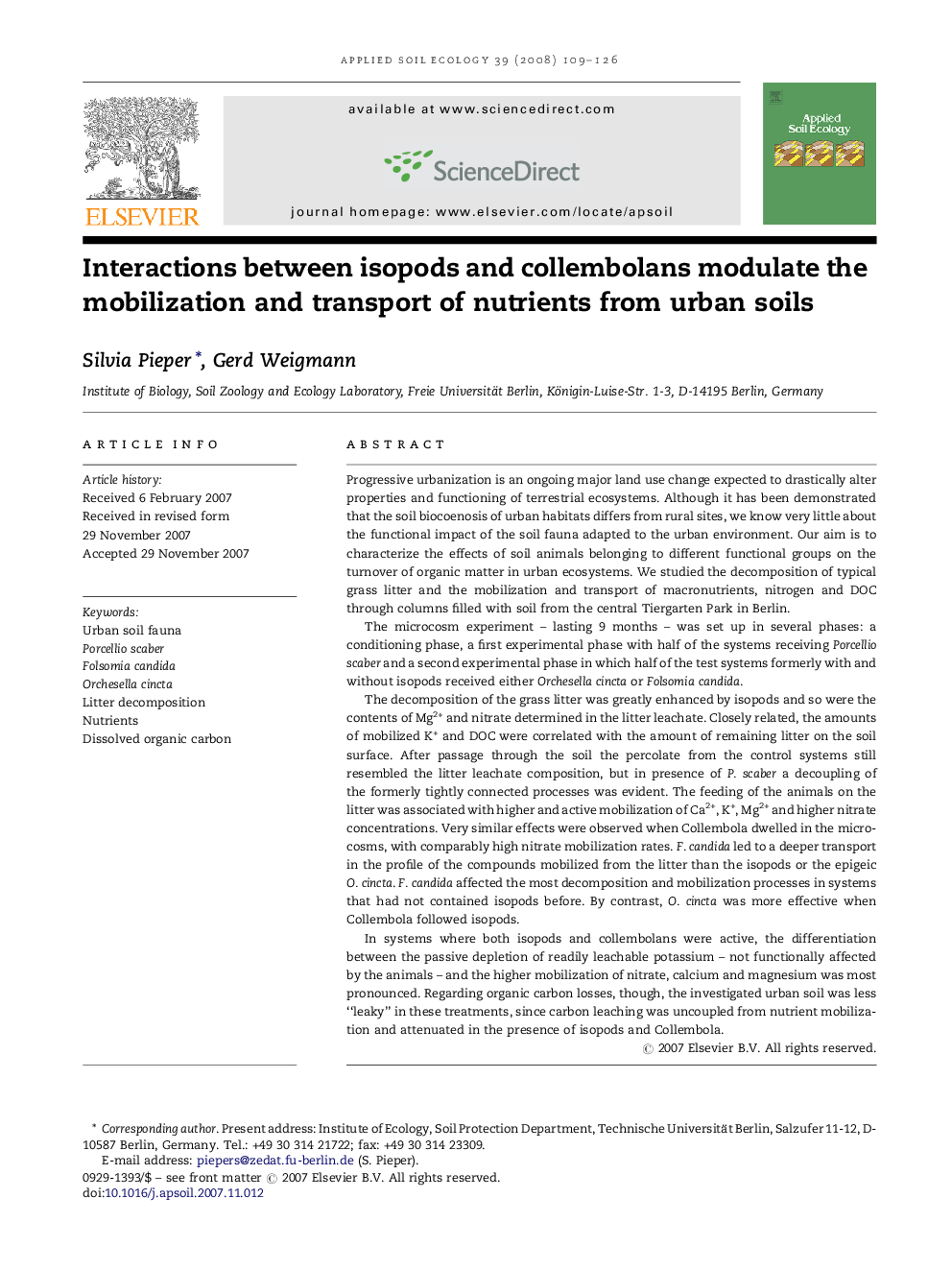| Article ID | Journal | Published Year | Pages | File Type |
|---|---|---|---|---|
| 4383190 | Applied Soil Ecology | 2008 | 18 Pages |
Progressive urbanization is an ongoing major land use change expected to drastically alter properties and functioning of terrestrial ecosystems. Although it has been demonstrated that the soil biocoenosis of urban habitats differs from rural sites, we know very little about the functional impact of the soil fauna adapted to the urban environment. Our aim is to characterize the effects of soil animals belonging to different functional groups on the turnover of organic matter in urban ecosystems. We studied the decomposition of typical grass litter and the mobilization and transport of macronutrients, nitrogen and DOC through columns filled with soil from the central Tiergarten Park in Berlin.The microcosm experiment – lasting 9 months – was set up in several phases: a conditioning phase, a first experimental phase with half of the systems receiving Porcellio scaber and a second experimental phase in which half of the test systems formerly with and without isopods received either Orchesella cincta or Folsomia candida.The decomposition of the grass litter was greatly enhanced by isopods and so were the contents of Mg2+ and nitrate determined in the litter leachate. Closely related, the amounts of mobilized K+ and DOC were correlated with the amount of remaining litter on the soil surface. After passage through the soil the percolate from the control systems still resembled the litter leachate composition, but in presence of P. scaber a decoupling of the formerly tightly connected processes was evident. The feeding of the animals on the litter was associated with higher and active mobilization of Ca2+, K+, Mg2+ and higher nitrate concentrations. Very similar effects were observed when Collembola dwelled in the microcosms, with comparably high nitrate mobilization rates. F. candida led to a deeper transport in the profile of the compounds mobilized from the litter than the isopods or the epigeic O. cincta. F. candida affected the most decomposition and mobilization processes in systems that had not contained isopods before. By contrast, O. cincta was more effective when Collembola followed isopods.In systems where both isopods and collembolans were active, the differentiation between the passive depletion of readily leachable potassium – not functionally affected by the animals – and the higher mobilization of nitrate, calcium and magnesium was most pronounced. Regarding organic carbon losses, though, the investigated urban soil was less “leaky” in these treatments, since carbon leaching was uncoupled from nutrient mobilization and attenuated in the presence of isopods and Collembola.
